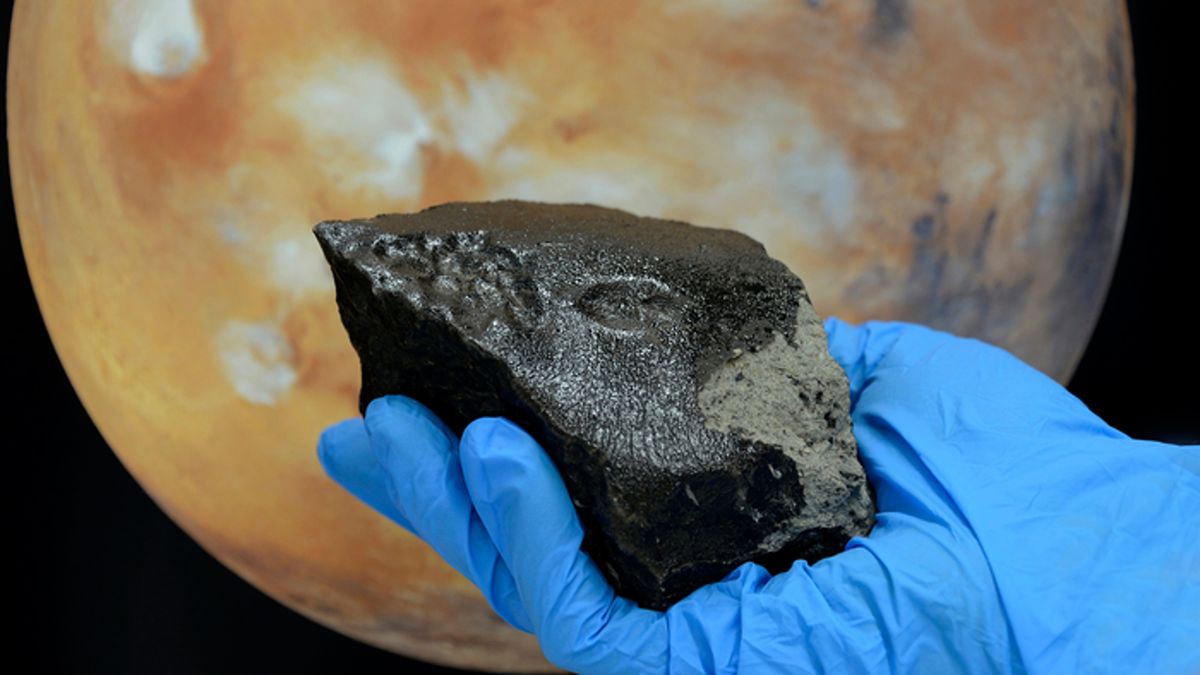Mars meteorite that crashed to Earth contains 'huge diversity' of organic compounds
By Harry Baker published 2 days ago
A new study into the Tissint meteorite, which crash-landed in Morocco in 2011, revealed a wide array of organic compounds hidden in the rare space rock.

A fragment of the Tissint meteorite, which crashed to Earth in 2011. (Image credit: Ludovic Ferriere/Natural History Museum Vienna)
A Martian meteorite that crashed to Earth 12 years ago contains a "huge diversity" of organic compounds, including one that has never been seen on Mars before, a new study has found. The findings could help scientists understand more about the Red Planet’s habitability and whether it potentially once harbored life, researchers said.
The Tissint meteorite broke apart in the sky above the city of Tissint in Morocco on July 18, 2011, showering fragments of the space rock across the surrounding desert. The meteorite, which formed on Mars hundreds of millions of years ago, was likely ejected from our cosmic next-door neighbor by a cataclysmic event before being caught in Earth's gravitational field. It is one of only five Martian meteorites witnessed by people as it crashed into our planet.
In a new study, published Jan. 11 in the journal Science Advances(opens in new tab), researchers analyzed fragments of the meteorite and found examples of at least five different types of organics compounds.
The new study represents "the most comprehensive catalog ever made of the diversity of organic compounds found in a Martian meteorite or in a sample collected and analyzed by a rover," researchers wrote in a statement(opens in new tab).
More:
https://www.livescience.com/tissint-meteorite-organic-compounds
